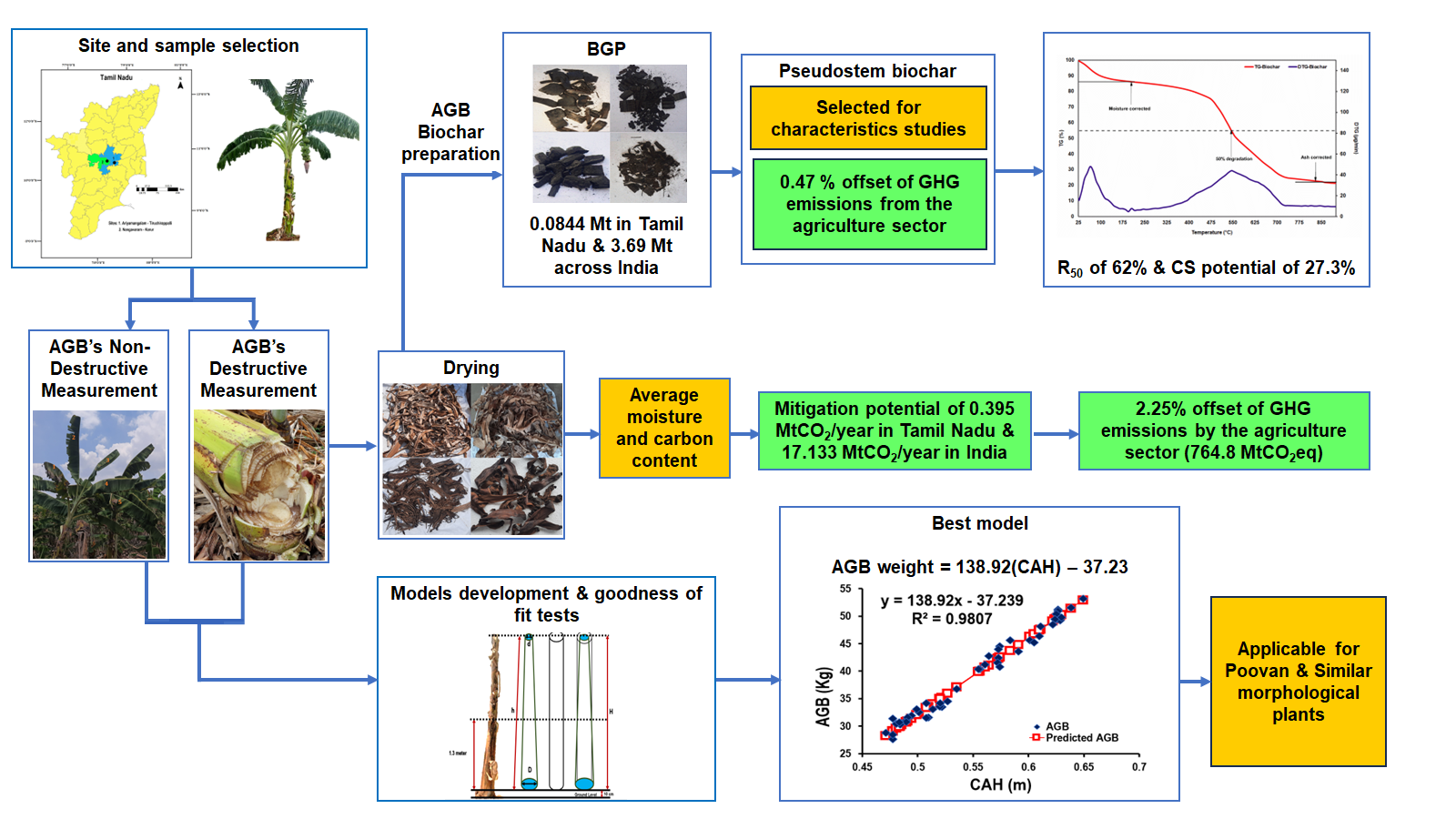
The standing plant biomass that remains after harvesting bananas is the Above Ground Biomass (AGB); these residues have great carbon sequestration (CS) potential. This study quantifies the AGB yield of the Poovan (Musa acuminata) plant in semi-arid Tamil Nadu, India through novel modified non-destructive and destructive measurements. AGB’s moisture and carbon content estimation quantifies the AGB carbon stock of 107.8 Gigagrams and CS potential of 0.395 MtCO2/year. Improper management of AGB leads to greenhouse gas emissions, which can be remedied by biochar production as it is a negative emission technology. Leaves, pseudostem, peduncle and bud biochar are produced through slow pyrolysis method and their yield determines the Biochar Generation Potential (BGP) of the whole AGB. Among the four, the pseudostem biochar has a good yield of 37.1% and BGP of 0.084 Mt/year and its characteristics studies reveal the stability - Recalcitrance Index and CS potential as 62% and 27.3%. Quantifying biomass yield is essential for CS operations. The measurement of a plant’s circumference and height form the basis of allometry to estimate biomass. Four linear estimation models are developed to estimate Poovan’s AGB and morphologically similar crops. Model 4 most accurately predicts the AGB among the models developed.
Total file downloads: 18